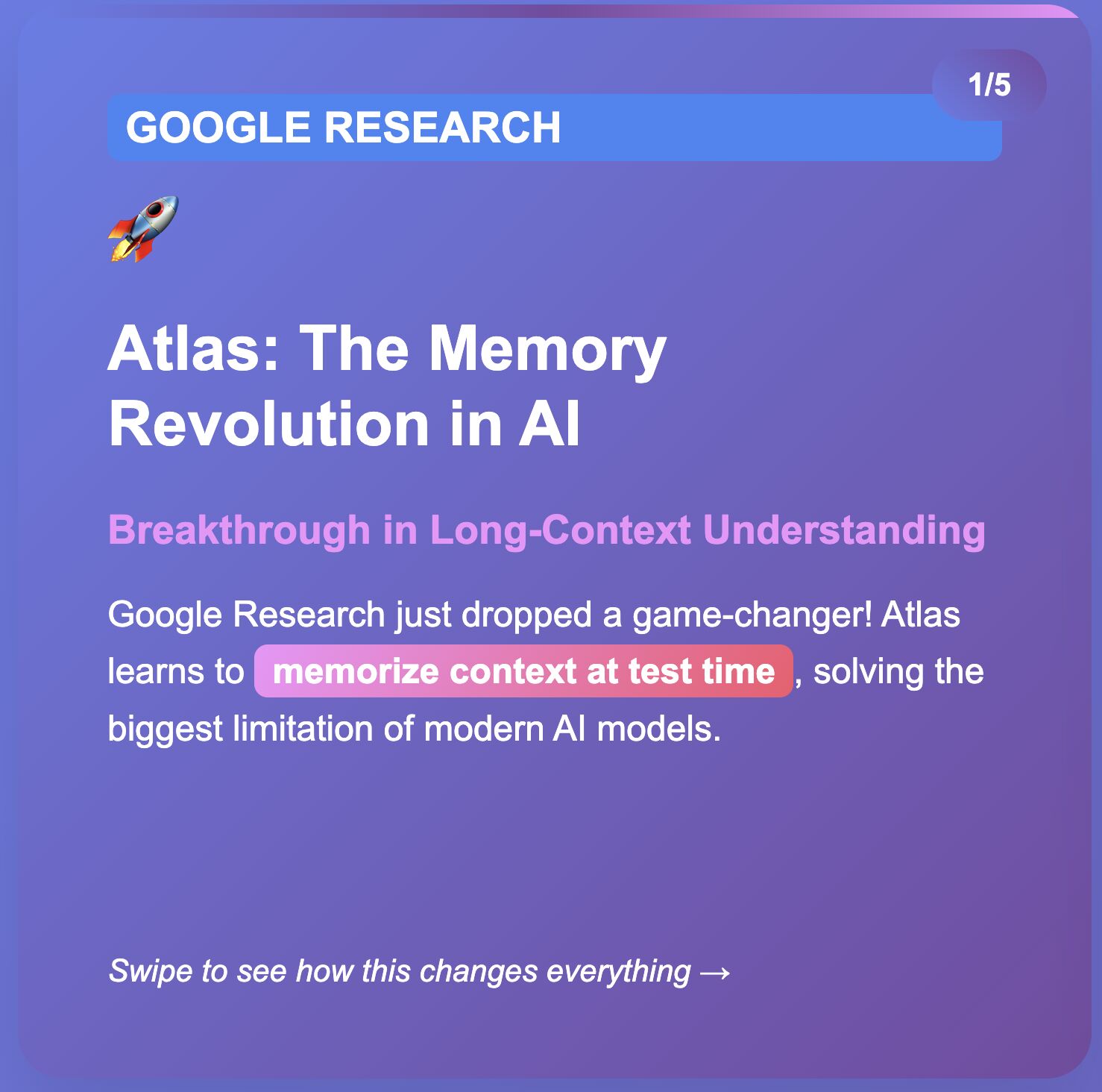𝗚𝗼𝗼𝗴𝗹𝗲 𝗷𝘂𝘀𝘁 𝗶𝗻𝘁𝗿𝗼𝗱𝘂𝗰𝗲𝗱 𝗮 𝗻𝗲𝘄 𝗔𝗜 𝗮𝗿𝗰𝗵𝗶𝘁𝗲𝗰𝘁𝘂𝗿𝗲 𝗰𝗮𝗹𝗹𝗲𝗱 𝗔𝗧𝗟𝗔𝗦, 𝗮𝗻𝗱 𝗶𝘁’𝘀 𝗮 𝗽𝗿𝗲𝘁𝘁𝘆 𝗲𝘅𝗰𝗶𝘁𝗶𝗻𝗴 𝗹𝗲𝗮𝗽 𝗳𝗼𝗿𝘄𝗮𝗿𝗱.
Instead of just making models bigger (like we’ve seen with Transformers), 𝗔𝗧𝗟𝗔𝗦 focuses on using memory more efficiently. It’s built around the 𝗢𝗺𝗲𝗴𝗮 rule, which helps the model understand context better without needing tons of extra memory.
It also uses an optimiser called 𝗠𝘂𝗼𝗻 that updates memory more precisely, kind of like giving the model a smarter way to learn and adapt.
What I really like is how it handles memory using advanced techniques to store more meaningful info without actually increasing the size. It’s like having a smaller bag that somehow holds everything you need (think Hermione’s handbag in Harry Potter 😅 ).
And instead of using fixed attention like older models, it uses a more flexible, learnable system. That means it can work better with large and complex data.
𝗬𝗼𝘂 𝗰𝗮𝗻 𝗲𝘅𝗽𝗹𝗼𝗿𝗲 𝗺𝗼𝗿𝗲 𝗮𝗯𝗼𝘂𝘁 𝘁𝗵𝗶𝘀 𝗮𝗿𝗰𝗵𝗶𝘁𝗲𝗰𝘁𝘂𝗿𝗲 𝗳𝗼𝗿 𝗴𝗼𝗼𝗴𝗹𝗲 𝗿𝗲𝘀𝗲𝗮𝗿𝗰𝗵 𝘁𝗲𝗮𝗺 𝗶𝗻 𝘁𝗵𝗲 𝗯𝗲𝗹𝗼𝘄 𝗹𝗶𝗻𝗸:





